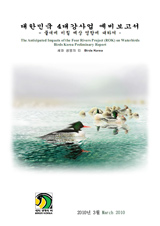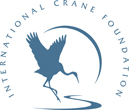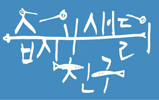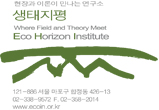
March 17 2010
Executive Summary
Seasonal patterns of precipitation in the Republic of Korea resulted historically in seasonally shallow rivers and extensive floodplain wetlands supporting a rich avian biodiversity. Especially during the second half of the twentieth century, all large and most small rivers in the Republic of Korea have been modified to a greater or lesser degree by dams, reinforced banks and in some cases by estuarine barrages. Most stretches of river are also prone to disturbance from roads and other infrastructure along their flanks, and most floodplain wetland has already been converted for agriculture and other uses. While there are few historic data, several waterbird species have been lost to the Republic of Korea due to habitat loss and degradation or due to human pressure, while many other species have become more localised or have declined. Despite these changes, many stretches of river and estuaries still remain internationally important for waterbirds, and/or support globally threatened waterbird species, and should be conserved in accordance with national laws and e.g. the Ramsar Strategic Plan (2009-2015). The Four Rivers Project (launched in November 2009) threatens many of these remaining wetlands. It entails further simultaneous large-scale construction along the Han, the Nakdong, the Geum and the Yeongsan Rivers, four of the nation’s five largest rivers. It includes deep-dredging of 691 km of river, the construction of 16 new dams, the rebuilding of two major estuarine barrages, the strengthening of embankments and the construction of >1700 km of bicycle road and other tourist-related infrastructure. Predictions of the economic and social costs and benefits of the Four Rivers Project have been presented in a range of literature and statements. This preliminary report aims to assess some of the anticipated impacts on waterbirds of the Four Rivers Project through (1) reduced flood-pulse, (2) loss of shallow river habitat, (3) increased degradation and reduced opportunity for the restoration of estuaries, and (4) an increase in disturbance. Species and some of the sites that are likely to be affected are identified in the main through analysis of data generated by an annual bird census coordinated by the national Ministry of Environment (MOE Census) first conducted in 1999. Out of >140 sites now covered by the MOE Census, this report considers that 48 such sites are likely to be affected, in addition to several thousands of kilometre of stream and river that are not covered by the Census but which are included in related infrastructure plans. Data from these 48 sites can provide some insight into the numbers of waterbirds and the species likely to be most affected, and in future years should enable impacts of the Four Rivers Project to be monitored with greater confidence.
The MOE Census data also confirm that within the Republic of Korea shallow stretches of river and (near-natural) estuaries tend to support a higher density of waterbirds per hectare than river- impoundments, as also indicated by independent survey at the Geum Estuary during northward and southward migration and at the Yeongsan and Nakdong Estuaries throughout the year. In addition, the MOE Census data confirm that several species considered ecologically dependent on rivers, their floodplains and/or their estuaries are already nationally scarce, and in some cases have shown declines over the past decade. While analysis of the MOE Census is unable to produce national population estimates of very local and scarce species such as the globally Endangered Scaly-sided Merganser, in combination with other sources the data do confirm this species’ presence on a very few stretches of river and its ecological dependence on relatively undisturbed and free-flowing rivers.
This report concludes that without cancellation or adequate mitigation, the Four Rivers Project will impact ca. 50 bird species negatively (including 30 species of waterbird), causing further declines in several sensitive waterbird species that are ecologically dependent on shallow rivers, flood-plain wetlands and estuaries. It will also reduce the conservation value of at least one Ramsar site and negatively affect eight BirdLife-designated Important Bird Areas. As such the Four Rivers Project will hinder the nation’s efforts to achieve genuinely sustainable development as set out by the United Nations and the Millennium Development Goals (UN, 2008).
Media Links
 |
|
 |
|










